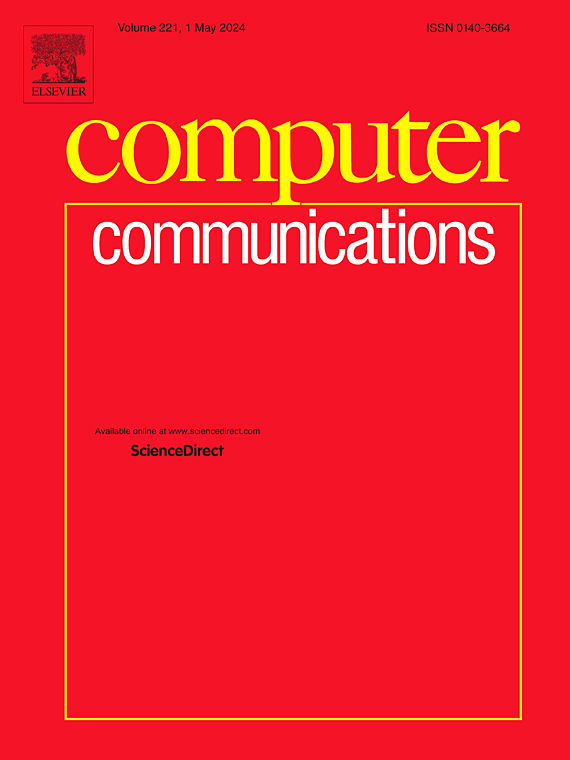RP-DFC:数据中心网络中基于响应探测和动态流分类的负载平衡
IF 4.5
3区 计算机科学
Q1 COMPUTER SCIENCE, INFORMATION SYSTEMS
引用次数: 0
摘要
数据中心网络通过在主机之间建立多条可访问路径来实现高带宽。这就需要一个负载均衡的方法来有效地为数据流选择最优路径,最大限度地减少传输延迟和路径拥塞。当前依赖于主动检测的拥塞感知和负载平衡方法会遇到探针带来大量带宽开销的问题,并且忽略了网络流量的分布特征。本文介绍了RP-DFC作为一种分布式负载平衡方法,它利用响应式探测和数据平面内的流分类。RP-DFC采用带内网络遥测和主动检测来创建响应式探针拥塞感知机制。该机制可以根据网络拥塞情况自适应调整检测频率,大大降低了主动检测的带宽开销。RP-DFC根据数据中心独特的流量分布特点,采用先进的大流和小流分类技术,进一步增强了高负载场景下的网络性能。这种在网络边缘的战略实施优化了流量管理,显著优于现有方法。RP-DFC在高负载条件下的性能比HULA提高了30%,同时探头开销减少了98%。此外,当与W-ECMP等替代方法进行基准测试时,RP-DFC的性能提高了29%,突出了其在优化数据中心网络运营方面的有效性。本文章由计算机程序翻译,如有差异,请以英文原文为准。
RP-DFC: Responsive Probes and Dynamic Flow Classification based load balancing in datacenter networks
Datacenter networks achieve high bandwidth by establishing multiple accessible paths between hosts. This necessitates a load-balancing approach to effectively select optimal paths for data flows, minimizing transmission delays and path congestion. The current congestion awareness and load-balancing methods that rely on active detection encounter issues with substantial bandwidth overhead from probes and overlook the distribution characteristics of network traffic. This paper introduces RP-DFC as a distributed load-balancing approach that utilizes responsive probes and flow classification within the data plane. RP-DFC employs in-band network telemetry and active detection to create a responsive probe congestion awareness mechanism. This mechanism can adaptively adjust the detection frequency according to the network congestion status, significantly decreasing the bandwidth overhead of active detection. RP-DFC further enhances network performance in high-load scenarios by employing advanced large-flow and small-flow classification techniques tailored to data centers’ unique traffic distribution characteristics. This strategic implementation at the network edge optimizes traffic management, significantly outperforming existing methods. RP-DFC exhibits a substantial 30% performance improvement over HULA under high-load conditions, concurrently reducing probe overhead by an impressive 98%. Moreover, when benchmarked against alternative methods like W-ECMP, RP-DFC achieves a notable 29% enhancement in performance, highlighting its effectiveness in optimizing data center network operations.
求助全文
通过发布文献求助,成功后即可免费获取论文全文。
去求助
来源期刊

Computer Communications
工程技术-电信学
CiteScore
14.10
自引率
5.00%
发文量
397
审稿时长
66 days
期刊介绍:
Computer and Communications networks are key infrastructures of the information society with high socio-economic value as they contribute to the correct operations of many critical services (from healthcare to finance and transportation). Internet is the core of today''s computer-communication infrastructures. This has transformed the Internet, from a robust network for data transfer between computers, to a global, content-rich, communication and information system where contents are increasingly generated by the users, and distributed according to human social relations. Next-generation network technologies, architectures and protocols are therefore required to overcome the limitations of the legacy Internet and add new capabilities and services. The future Internet should be ubiquitous, secure, resilient, and closer to human communication paradigms.
Computer Communications is a peer-reviewed international journal that publishes high-quality scientific articles (both theory and practice) and survey papers covering all aspects of future computer communication networks (on all layers, except the physical layer), with a special attention to the evolution of the Internet architecture, protocols, services, and applications.
 求助内容:
求助内容: 应助结果提醒方式:
应助结果提醒方式:


